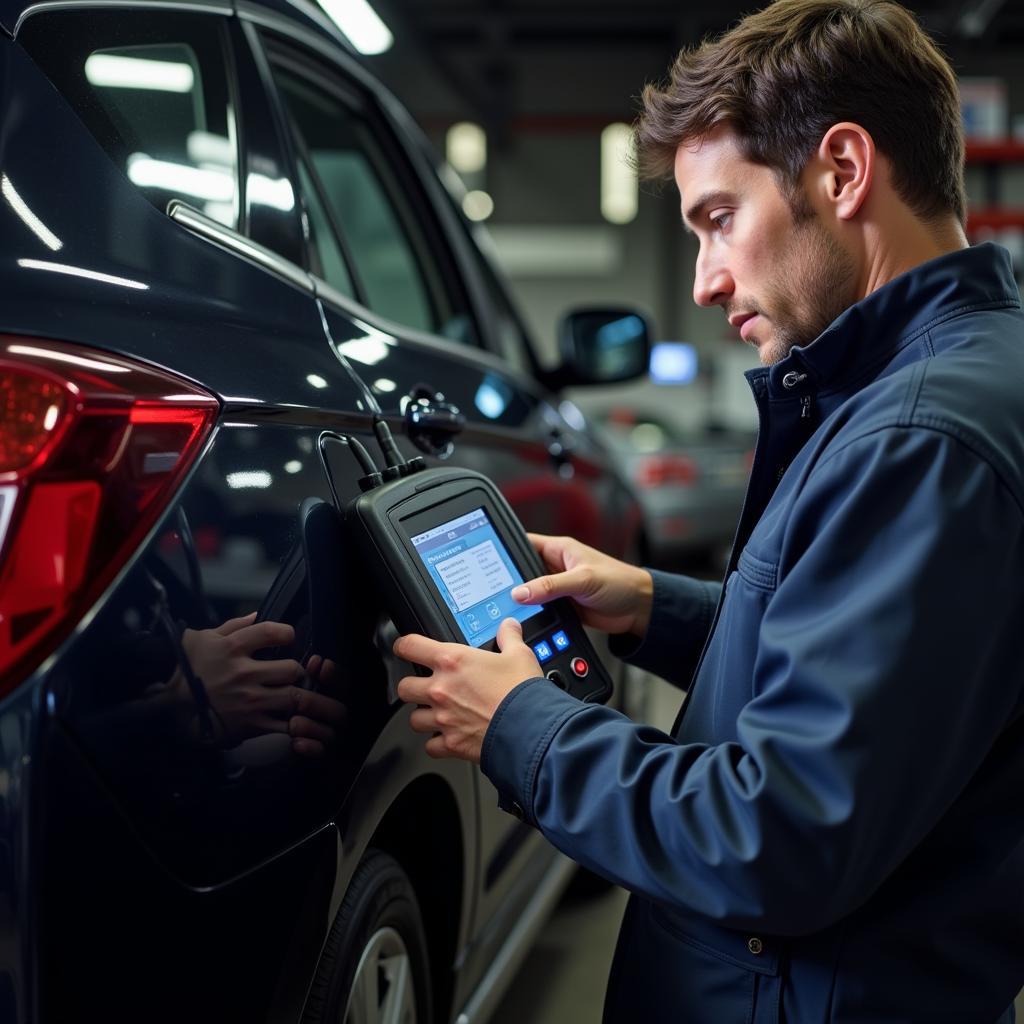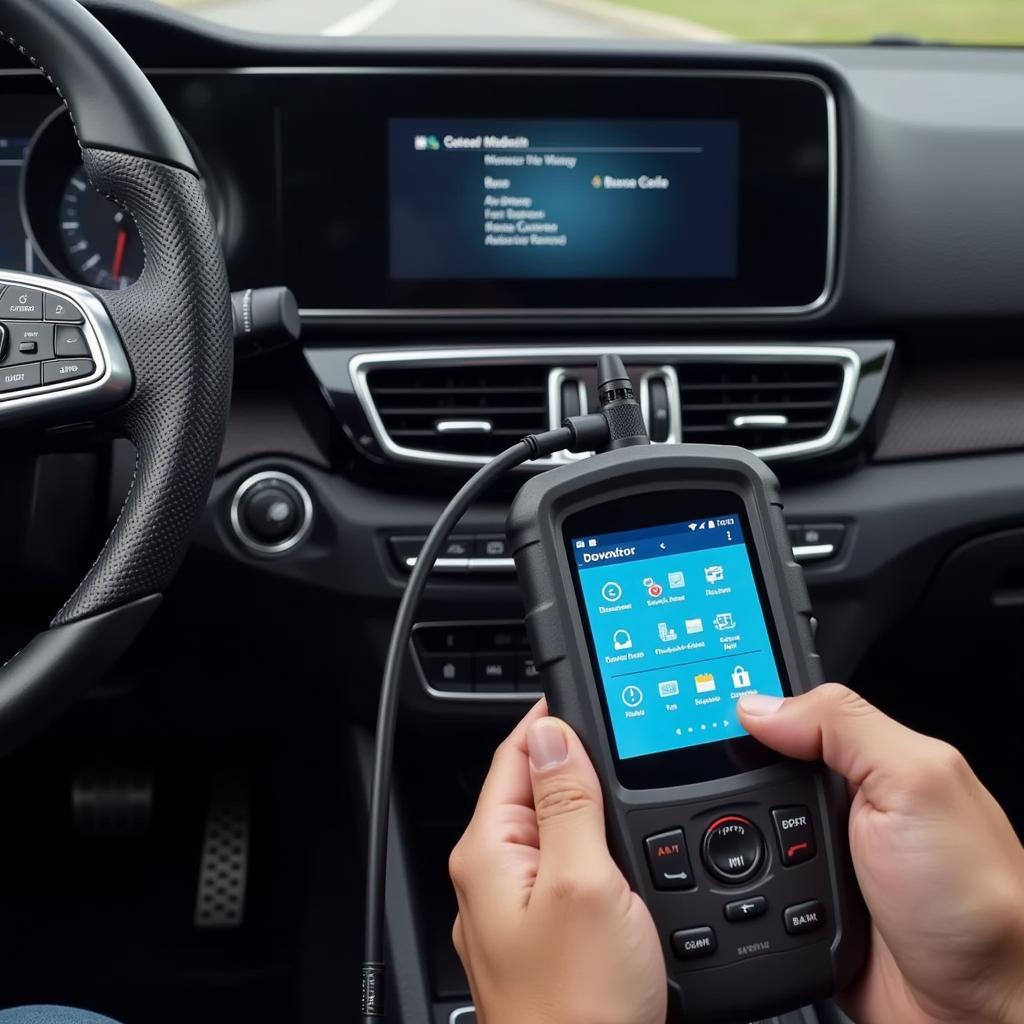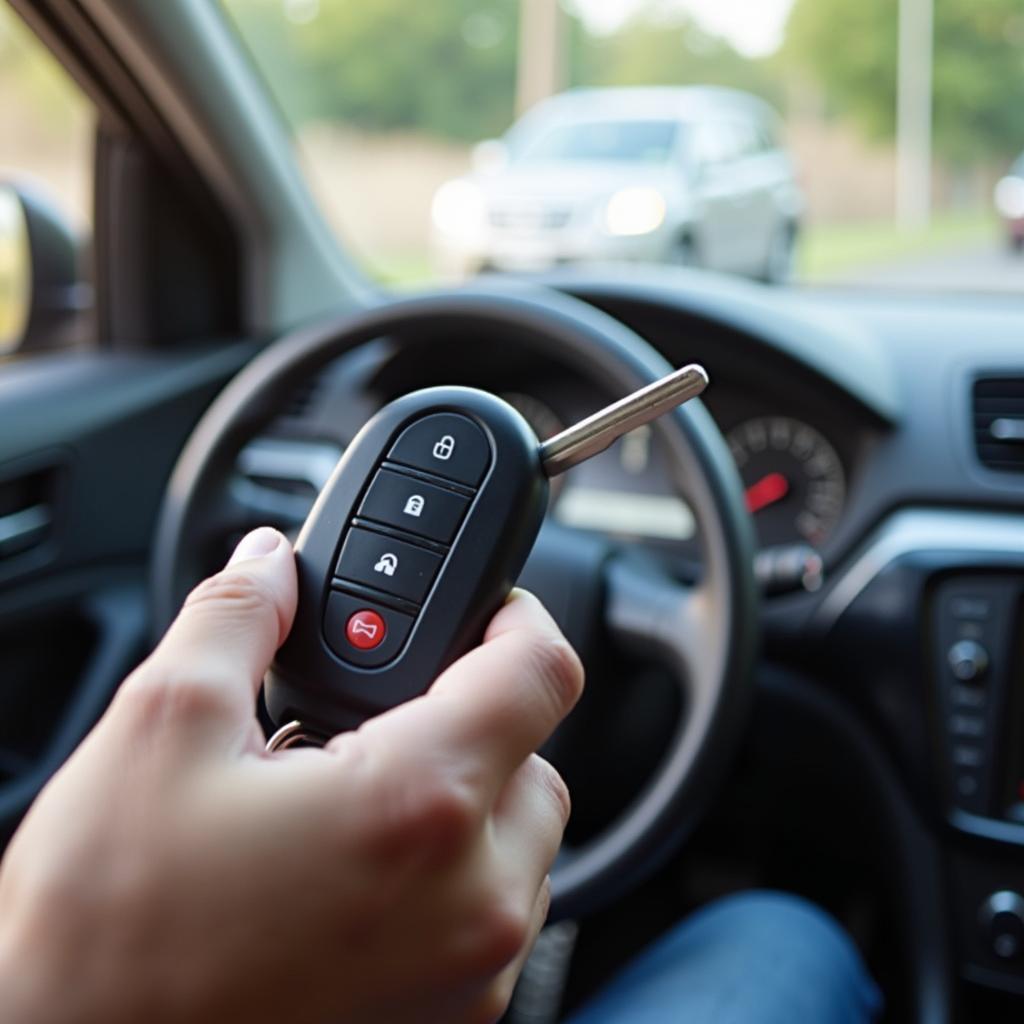The automatic emergency brake warning light is a crucial safety feature in modern vehicles. It alerts you to potential problems with the system or indicates when the system is actively engaged. Understanding this warning light can help you address issues promptly and ensure your safety on the road. This article will delve into the common causes, troubleshooting steps, and solutions for an illuminated automatic emergency brake warning light.
If you’re experiencing issues with your automatic emergency brake warning light, particularly a blinking light on your Nissan, you might find helpful information at automatic emergency brake warning light blinking nissan.
What Triggers the Automatic Emergency Brake Warning Light?
The automatic emergency braking (AEB) system is designed to prevent or mitigate collisions by automatically applying the brakes when a potential hazard is detected. Several factors can trigger the warning light:
- Low Brake Fluid: Insufficient brake fluid can compromise the entire braking system, including the AEB.
- Faulty Sensors: The AEB system relies on sensors to detect obstacles. Malfunctioning sensors can trigger false alarms or prevent the system from engaging when needed.
- Brake System Issues: Problems with the brake calipers, rotors, or pads can affect the AEB system’s performance.
- Software Glitches: Occasionally, software errors within the vehicle’s control module can cause the warning light to illuminate.
- Wiring Problems: Damaged or corroded wiring can disrupt communication between the AEB system components.
Troubleshooting the Automatic Emergency Brake Warning Light
Addressing the automatic emergency brake warning light effectively requires a systematic approach. Here’s a step-by-step guide:
- Check the Owner’s Manual: Your vehicle’s owner’s manual provides specific information about the AEB system and warning light indications.
- Inspect Brake Fluid Level: Ensure the brake fluid reservoir is filled to the recommended level. Low brake fluid should be addressed immediately.
- Visual Inspection: Check for any visible damage to the brake components, sensors, or wiring.
- Scan for Diagnostic Trouble Codes (DTCs): Using a diagnostic scanner, retrieve any stored DTCs related to the AEB system. These codes provide valuable insights into the specific fault.
- Test the Sensors: Specialized diagnostic equipment can be used to test the functionality of the AEB sensors.
For more insights on brake assist warnings, especially for Chevy Cruze owners, you can refer to this resource on chevy cruze service brake assist warning.
Common Solutions for Automatic Emergency Brake Warning Light Issues
Depending on the diagnosed cause, the solution can range from simple maintenance to more complex repairs:
- Top-up Brake Fluid: If the brake fluid level is low, top it up with the recommended fluid type.
- Sensor Replacement: Faulty sensors often require replacement.
- Brake System Repair: Address any issues with the brake calipers, rotors, or pads.
- Software Update: Software glitches can sometimes be resolved with a software update from the manufacturer.
- Wiring Repair: Damaged or corroded wiring needs to be repaired or replaced.
 Mechanic Diagnosing AEB System with Diagnostic Tool
Mechanic Diagnosing AEB System with Diagnostic Tool
“Regular maintenance, including brake inspections and fluid checks, can help prevent many AEB system problems,” advises Michael Stevens, Senior Automotive Diagnostic Technician.
Remote Diagnostics and Software Solutions
Advancements in automotive technology allow for remote diagnostics and software installations. These services can offer convenient and efficient solutions for certain AEB warning light issues. Remote diagnostics can pinpoint the problem, and remote software updates can address software-related faults without a physical visit to a repair shop. You can read more about common BMW ABS brake warning light meanings by clicking bmw abs brake warning light meanings.
Preventing Automatic Emergency Brake Warning Light Issues
Proactive measures can help prevent AEB system problems:
- Regular Brake System Maintenance: Adhere to the recommended maintenance schedule for brake inspections and fluid changes.
- Careful Driving Habits: Avoid hard braking and sudden maneuvers when possible.
- Promptly Address Warning Lights: Don’t ignore any warning lights related to the braking system.
 Car Undergoing Brake System Maintenance
Car Undergoing Brake System Maintenance
Conclusion
The automatic emergency brake warning light is a vital safety indicator. Understanding its meaning and taking appropriate action can prevent accidents and ensure your vehicle’s braking system operates effectively. By following the troubleshooting steps and solutions outlined in this article, you can address the automatic emergency brake warning light promptly and maintain your safety on the road. If the warning light persists, consult a qualified automotive technician for further diagnosis and repair. For information on front collision warnings and brake errors, check out front collision warning brake error. You can also read more about the 2013 Honda Civic’s early brake warning feature at 2013 honda civic ealry brake warning feature.
“Addressing brake system warnings immediately is paramount to ensuring your safety and the longevity of your vehicle,” adds Sarah Chen, Lead Software Engineer specializing in automotive systems.



